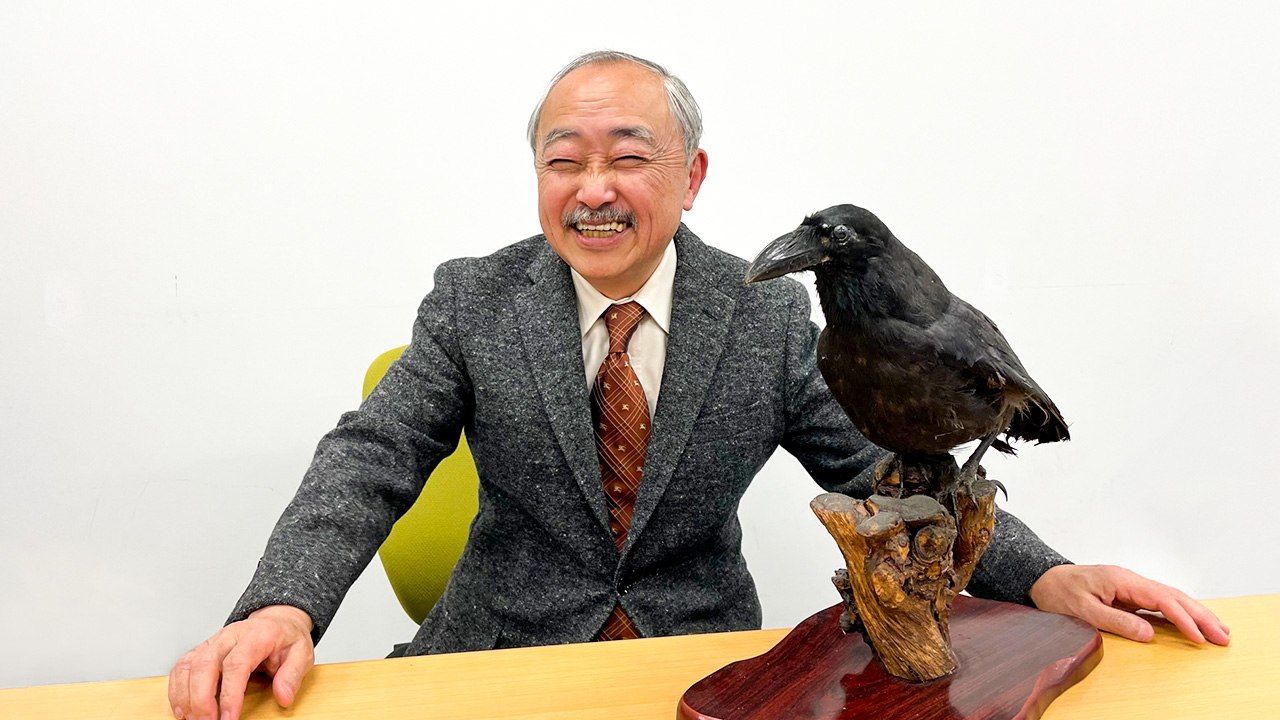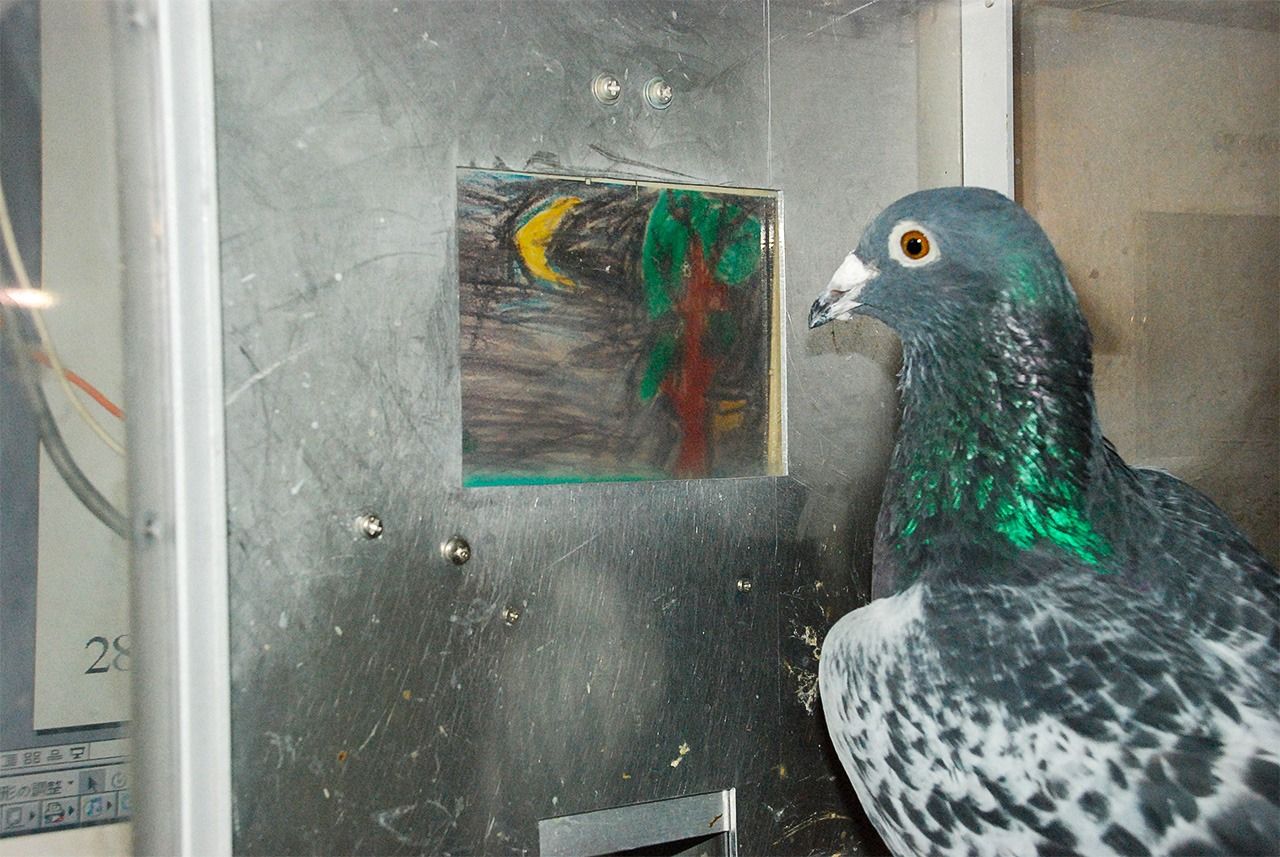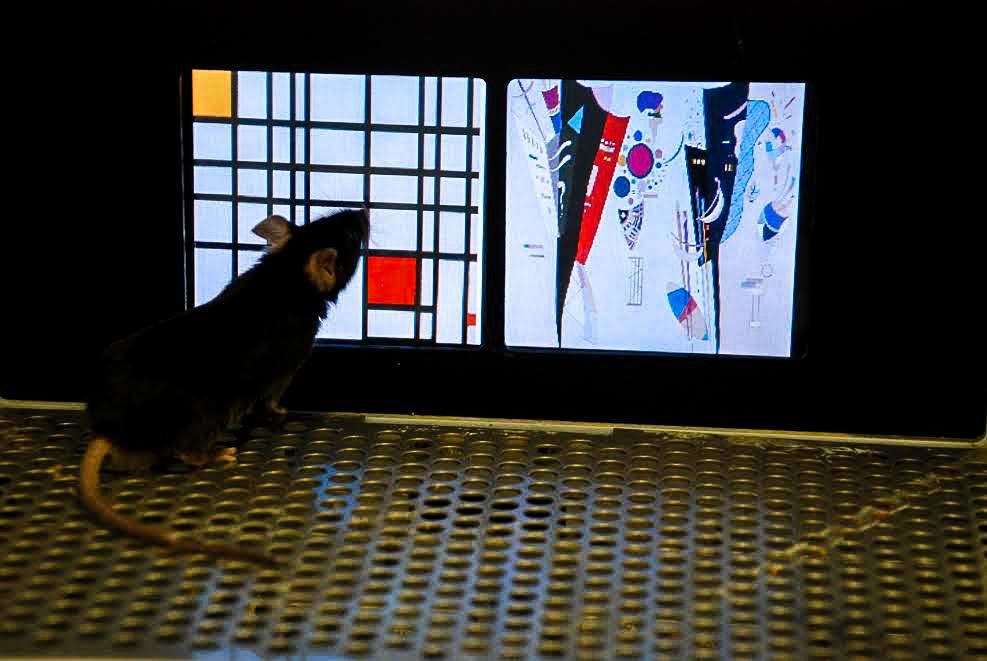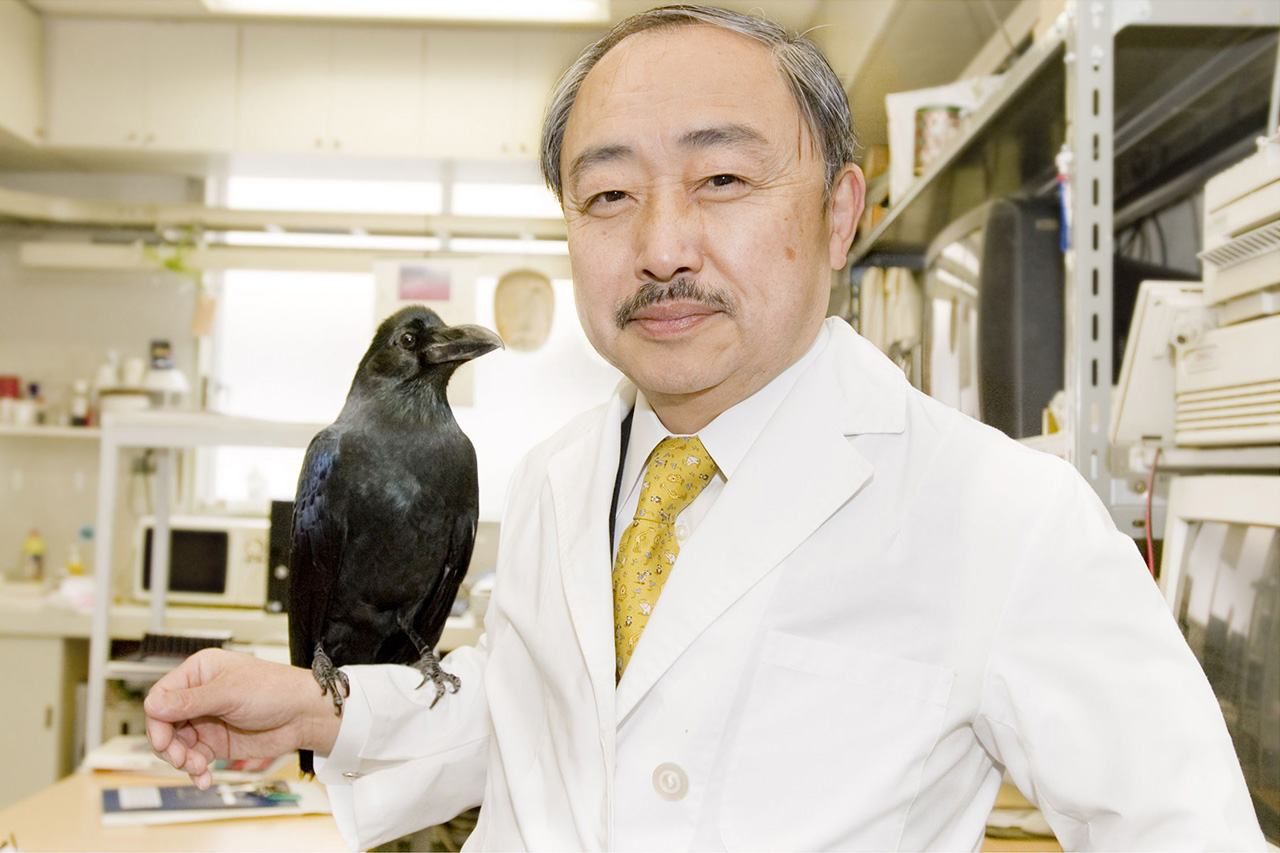
Japan’s Ig Nobel Prize Winners
Monet or Picasso? Japanese Researcher Watanabe Shigeru Proves Art Is for the Birds
Science Society- English
- 日本語
- 简体字
- 繁體字
- Français
- Español
- العربية
- Русский
Developing an eye for art, it turns out, is not exclusive to humans. Watanabe Shigeru and colleagues at Keiō University, where he is a professor of psychology, trained pigeons to distinguish different paintings, including those by the masters Claude Monet and Pablo Picasso. What is the significance of this? For those studying comparative cognition, it showed that birds make sense of their world in ways not unlike humans.
The team earned the Ig Nobel Prize in psychology in 1995 for their efforts. The prize, launched in 1991 by Annals of Improbable Research editor Mark Abrahams, celebrates the quirkier side of scientific discovery. The research of Watanabe and others, though, is no joke.
Discerning Tastes
Watanabe admits he took little heed of the Ig Nobel at first, viewing it as students at Harvard University “having a bit of fun.” He has since changed his tune and even attended a 2018 event in Tokyo highlighting the prize, which he described as “a fascinating exhibition of unique research.”
Watanabe stands out among Japan’s numerous Ig Nobel winners—28 and counting—as much for his unusual research topics as his exalted career (in 2020 he won the prestigious Japanese ornithological prize the Yamashina Yoshimaro Award for his decades of research into avian behavior).
Whether pigeons can be trained to discern a Monet from a Picasso may not be cutting-edge science, but the question piqued Watanabe’s curiosity for the implications it had in understanding what made the birds tick.
To test his hypothesis, he took two groups of pigeons and showed them 10 paintings by each artist. He rewarded the first group with food every time the birds pecked at a key when a Monet popped up on the screen but gave nothing for a Picasso, reversing the conditions for the second group. By the twentieth day of the experiment, he found that his avian subjects had learned to distinguish the paintings of one artist from the other with a high degree of accuracy.

A pigeon examines a picture during a training session. (Courtesy of Watanabe Shigeru)
Encouraged by his findings, he repeated the experiment with the two groups, this time swapping paintings by Monet and Picasso with works by other impressionist and cubist artists. The results were the same, leading Watanabe to conclude that the birds had come to recognize the dominant traits of the two schools. The experiment had important implications for understanding animal intelligence, but Watanabe stresses this does not mean that the pigeons were enjoying art for art’s sake. “The birds selected paintings according to whether or not they received a reward,” he explains, “not out of an innate appreciation of the works.”
Homing In on Similarities
While the birds may have been motivated more by appetite than aesthetics, Watanabe found that they exhibited a remarkable aptitude for processing complex visual stimuli in ways that suggested categorization—something that humans also do. Raising the bar, he displayed the paintings in a variety of ways, including in black and white, upside down, reversed, and in segments. Each time the pigeons chose with a comparable level of accuracy.
From this, Watanabe found parallels in the philosophical ideas of Austrian philosopher Ludwig Wittgenstein (1889–1951). Wittgenstein argued in his posthumously published book Philosophical Investigations the idea of “family resemblance,” which posits that people can easily recognize numerous overlapping similarities in a group, such as the curve of the nose or other resemblances among members of a family. Watanabe next set out to test just how much of a discerning eye the birds possessed. “What I was really curious to know was whether they could distinguish a good painting from a bad one,” he says.
Art Appreciation
Setting up the experiment, Watanabe had his pick of masterpieces, but faced a challenge in precuring so-called bad paintings. He approached a colleague, a scholar of aesthetics, about cobbling together something awful on canvas only to be rebuffed. It turns out that judging art is extremely subjective, making it tricky to define even the most cringeworthy work as “bad.” Changing his approach, he visited a nearby elementary school and took photos of children’s artwork. He then asked several people to judge the pictures as either “beautiful” or “ugly,” using this as the yardstick for his experiment.
Following the same method as his previous experiments, he showed his pigeon a slideshow of the good and bad examples. As before, the birds learned to distinguish between the two groupings of pictures, including when images were reduced in size or new examples were introduced. However, he noticed that their accuracy waned when the pictures were shown in grayscale or obscured by a mosaic.
That the birds were able to learn the categories of “good” and “bad” paintings strongly suggested to Watanabe that pigeons possess an aptitude for processing complex visual stimuli on par with humans.
Rodent Empathy
Watanabe ended up caring for some 100 pigeons over the course of his experiments. Striving to ensure the integrity of his research, he constantly dealt with such challenges as birds escaping mid-experiment or outbreaks of disease among his flock. In one instance, a pigeon from a supplier was displaying top-notch results, much to Watanabe’s excitement, but had to be pulled from the experiment once it became clear that the bird’s superior performance was due to it having been used in previous research.
Watanabe’s ongoing investigation into animal intelligence skirts the fringes of his specialty of psychology. However, he insists that the field holds insights into human behavior—this is what he tells people, anyway. “My official stance is that you have to study animals to understand the evolution of human cognition,” he says. “But truth be told, I just like studying critters.”
An animal lover by nature, Watanabe considered pursuing biology in school, but was put off by the field’s growing focus on the molecular mechanisms of living things. Doubtful that he would be able to engage in the type of research that interested him, he decided to join the School of Human Relations at Keiō University, whose psychology department boasted a prestigious animal-testing laboratory. “It fit me to a tee,” Watanabe declares.
At the time, animal studies in psychology typically used mice and rats as their subjects. One drawback of the animals’ use for research is that rodents have much weaker eyesight than humans. Starting in the 1950s, though, pigeons, animals with strong vision, became the preferred choice, subsequently leading to Watanabe’s research on the birds.

A mouse in training. (Courtesy Watanabe Shigeru)
He did not shun mice entirely, though. In one experiment, he showed that the animals were able to connect in a way not dissimilar to humans.
Mice have specialized fat cells on their backs that heat up when the animals are stressed, making it easy to gauge when they are strained. Watanabe confined one mouse inside a tube and let another wander around freely nearby. Predictably, the temperature of the fat cells of the trapped mouse increased. But when he confined several mice together inside a tube, the increase in temperature was less pronounced. “Obviously, having others nearby made the ordeal less stressful,” he explains. “You might say that for mice too, sharing a burden lightens the load for everyone.”
Overcoming Anthropocentrism
Along with mice and pigeons, Watanabe has turned his passion for research on such pressing question as spatial learning in eels in the hopes of understanding how the lithe creatures process information in their aquatic world.
For his experiment, Watanabe placed four tubes in a pool, making it so the eels could hide in only one of these. The eels learned the position of the open tube and were able to find it even when Watanabe made things more challenging by rotating the position of the pool. However, their performance dropped off dramatically when he turned off the lights, forcing the eels to find the hiding place in the dark, or changed the position of the open tube.
Most animals display some level of spatial learning, but Watanabe says that the experiment helped dispel the common perception in Japan that eels possess an almost preternatural memory. “This was obviously not the case,” he says. He hopes to continue his research, specifically the question of whether the contrasting environments of wild eels and those raised in captivity result in differences in brain structure between the two varieties.

Watanabe with an avian lab partner. (Courtesy Watanabe Shigeru)
After more than half a century of researching animal behavior, Watanabe insists that he has yet to change the anthropocentric bias of his field. He notes that while humans are no longer assumed to occupy the pinnacle of the evolutionary tree, human-centric thinking continues to dominate the study of intelligence. “It’s obvious that people are not the only beasts that think,” he says. “From the outset I wanted to overturn this linear hierarchal view by showing that animals have minds too.”
This ambition was born from a deep respect for living things, something Watanabe has fostered since he was a young man. “Studying animals has been one long lesson in humility,” he says with a self-conscious chuckle. His research has furthered our understanding of animals on many fronts, with more discoveries expected to appear on the horizon.
(Originally published in Japanese. Research and text by Hamada Nami and Power News. Banner photo © Power News.)